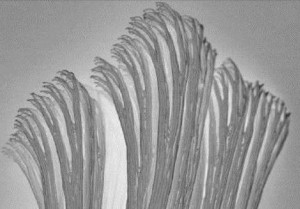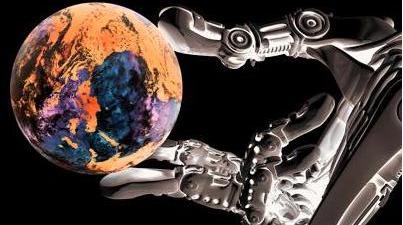Biomimicry is the study of nature as inspiration for human designs in effort to fit human technology into a more efficient and workable, sustainable model. Each organism alive today has the potential to teach humankind about the systems and rules it follows. Natural solutions aren’t just about having better materials.
They are about making products that might empower mankind against dwindling resources. Ecosystems aren’t just where we all live and consume resources but they are a resource of information as well. The ecosystem is self-replenishing and efficient and can be channeled and worked with in a way that has yet to be attempted. Potential new materials come with side effects that warrant equal consideration. Biomimicry is a paradigm that fits many emerging techs. Take a look at spider venom’s effect on the drug industry, for example:
A peptide found in spider venom might lead to a safer class of painkillers. What other drugs, chemicals and designs are being inspired by biology and newly-studied species?
Biomimicry is a relatively young term, describing designs that derive inspiration by emulation of designs found in nature. The movement is focused on sustainable human endeavors and projects that will compliment the environment humans share with the rest of the natural world and thus better humanity’s chance for survival. Check out this video, the most recent by Janine Benyus, one of the idea’s most vocal proponents.
You might wonder why these chemicals are found in nature at all? There are many functions and motivations behind the diverse, unfound substances found in the Eco-system. Plants develop poison to discourage predators. some develop drugs to encourage other species to assist with seed dispersal. Evolution has provided the earth with highly diversified species of plants fungi and animals the vast majority of which have yet to be explored.
French researchers discovered a painkiller as powerful as morphine in the venom of e infamous African black mamba snake. Then there is a potential psoriasis treatment derived from the venom of the Caribbean sun anemone, undergoing testing in the U.S. might help sufferers with psoriasis, autoimmune disorders, multiple sclerosis and rheumatoid arthritis.
Textures and surface patterns of geckos have been studied for stickiness. Skin textures of some animals have been proven to possess antimicrobial properties, in that bacterial colonies can’t find a way to attach to surfaces, making water currents and frequent rinsing enough to eliminate infective agents.

Artificial limb design and development has been greatly advanced by designs mimicking the weight-bearing capacity of other animals. New technologies are being developed to grant disabled people the ability to feel touch, as the natural mechanisms controlling pain, touch and movement are further understood.
In recent biomimetic news, we may see a mastery of understanding the human eye lead to a leap in ocular and immersive tech. MHOX is an Italian design firm who would like synthetic replacement eyes. to become an affordable, regular upgrade people opt for. Their work could restore sight to the blind and be the missing link to allow locative tech and a lot of web 2.0 concepts to become workable mainstream realities.
to become an affordable, regular upgrade people opt for. Their work could restore sight to the blind and be the missing link to allow locative tech and a lot of web 2.0 concepts to become workable mainstream realities.
There is an initial shock in some people when these concepts are explained. Something about the current trends over the last few decades favoring straight, clean lines that are inspired by lifeless geometry over bio-inspired, flowing shapes.
The drugs and prosthetics discussed, theorized and predicted in the biomimetics industries doesn’t have to turn humans into cyborgs, although some proponents wouldn’t be against that. It is likely that the public will be more inclined to accept these advancements as they are developed. Decades back people might have been less receptive to plastic hip replacements and artificial hearts, but the medical community has become very good at installing these prosthetics as minimally invasive, outpatient procedures.
|
Jonathan Howard
Jonathan is a freelance writer living in Brooklyn, NY |



